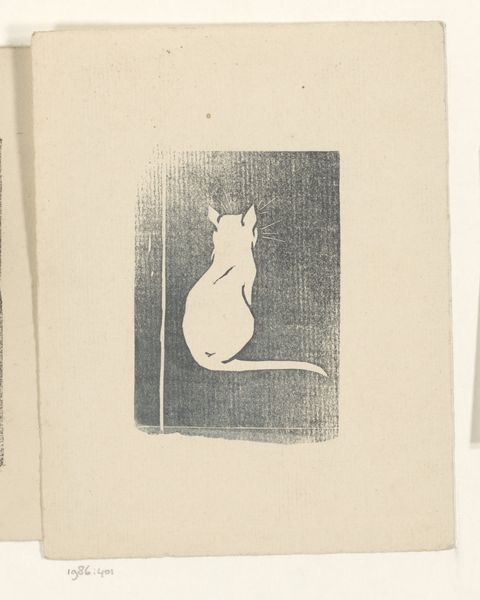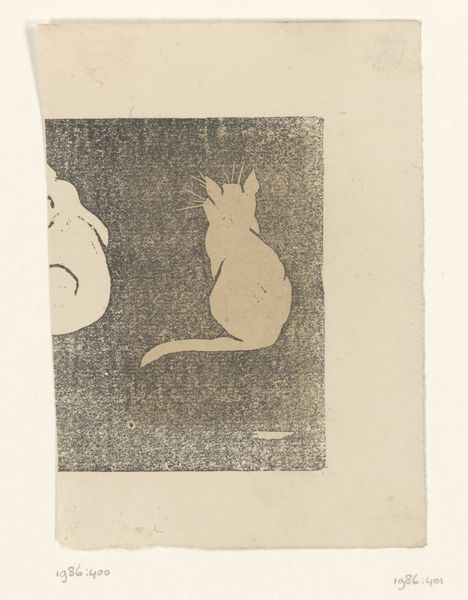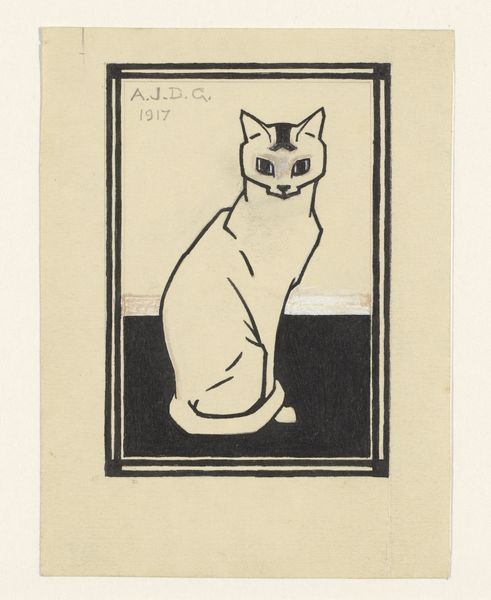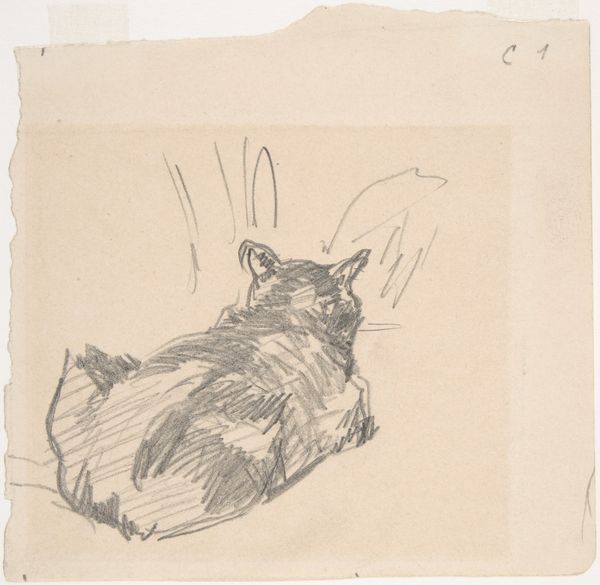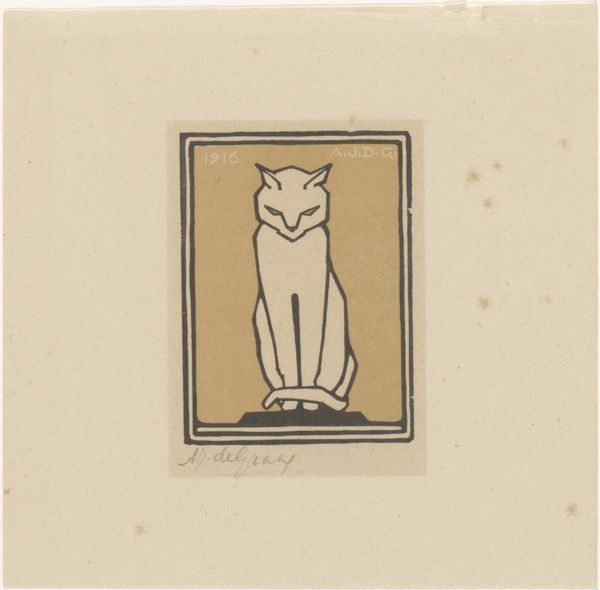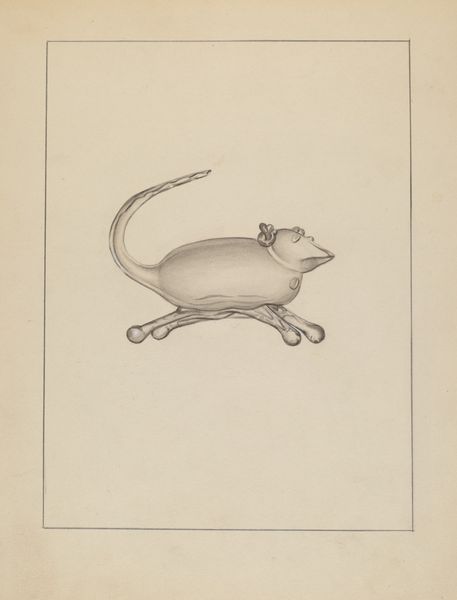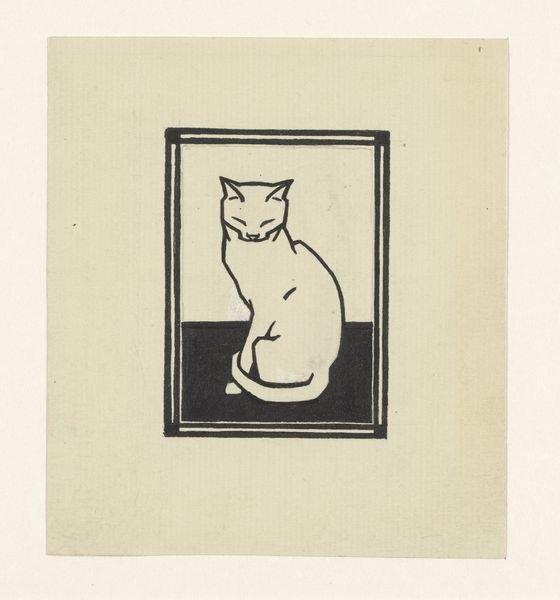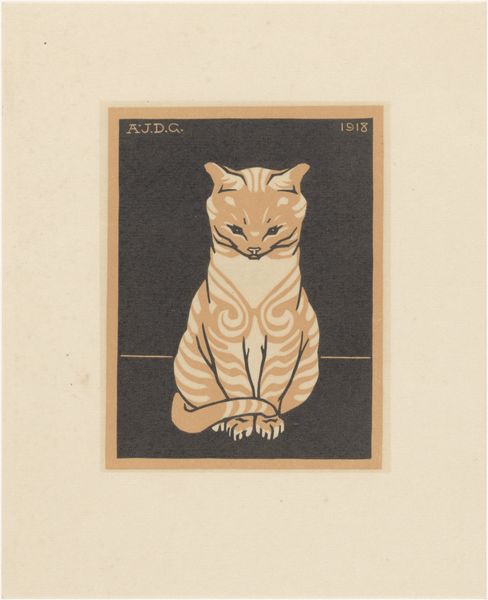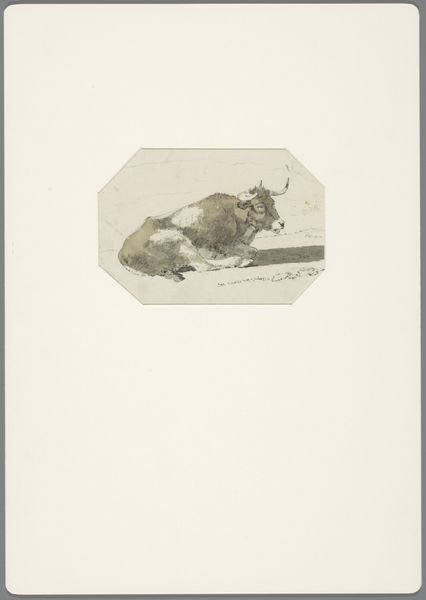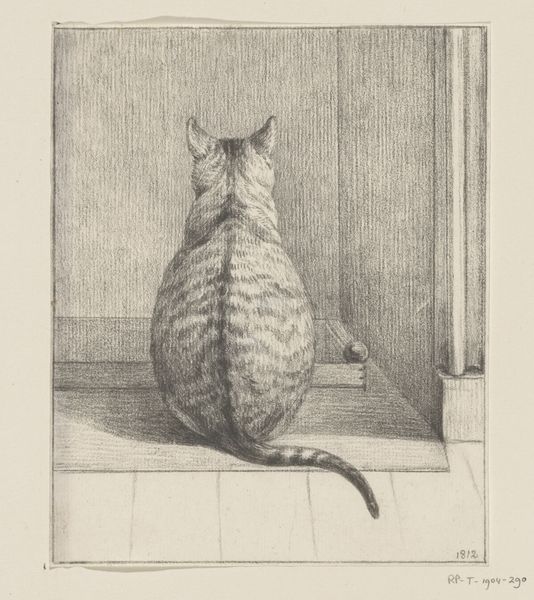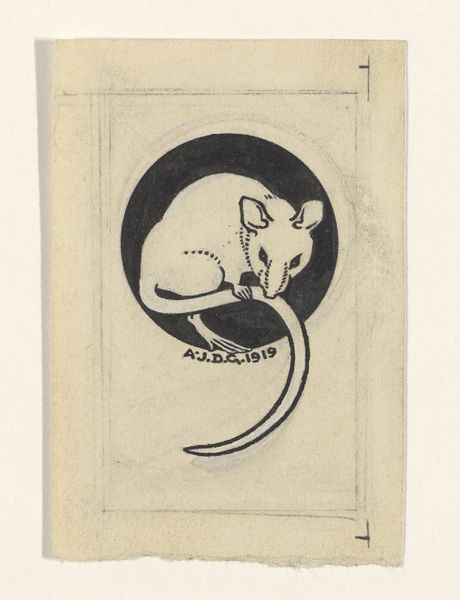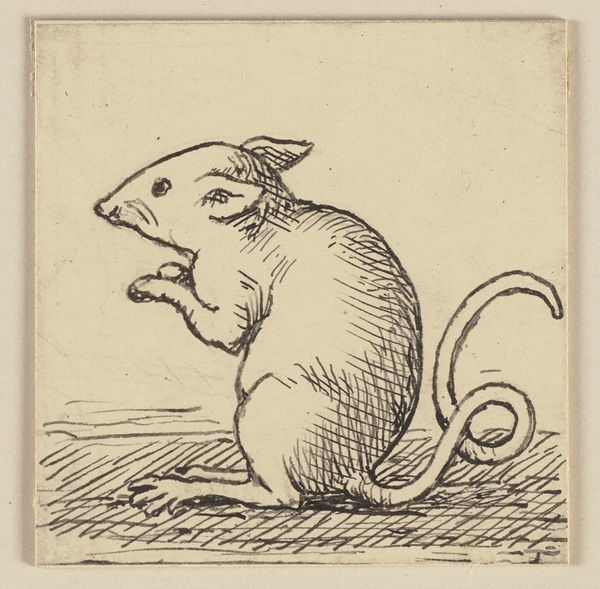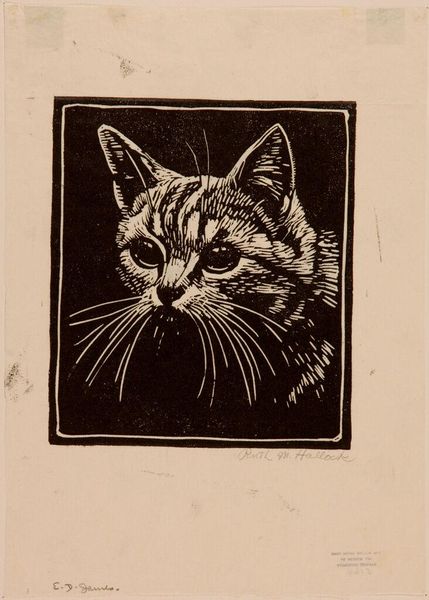
graphic-art, print
#
graphic-art
#
art-nouveau
#
animal
# print
#
form
#
line
#
symbolism
Dimensions: height 84 mm, width 54 mm
Copyright: Rijks Museum: Open Domain
Curator: Here we have an “Ex libris met kat op de rug gezien,” a bookplate depicting a cat seen from behind. This piece comes to us from Reinier Willem Petrus de Vries, created sometime between 1884 and 1952, utilizing graphic art printing techniques. Editor: There's a curious mix of whimsy and seriousness here. The neutral color palette—perhaps a faded olive?—creates a subdued backdrop, but the image itself is quite striking. The cat is centered and radiates power with its halo of fur sticking out behind its head. I’m not sure what to make of the bars behind and below it though. It creates a jail of sorts for our furry friend. Curator: Bookplates such as these gained popularity among those with personal libraries. Owning books was not always commonplace, but with greater printing access it led to people stamping them to identify that it was theirs. A visual declaration, so to speak. It is interesting that De Vries would choose to feature the cat. What are your thoughts about the selection? Editor: Well, the positioning of the cat interests me greatly. It is looking outward. While acting as a figure protecting this “ex-libris,” I think of how animal advocacy connects to feminist ideals; this creates a safe and powerful visual to identify personal belongings, connecting womanhood with protection and independence, concepts also tied to cat ownership. I wonder about its intended audience and if that impacts its narrative. Curator: Bookplates, due to their private use, often functioned outside the constraints of academic or public taste, allowing for playful subversions. De Vries produced art within a rapidly changing world, facing world wars, economic downturn and increasing nationalism. We may understand such pieces like these as a challenge to these grand events by emphasizing the intimacy of reading in community and companionship. Editor: Absolutely. The choice of a common domesticated animal creates immediate intimacy. It’s not about a grand historical figure or mythological event. Instead, it invites a viewer—or a reader, rather—into a personal, familiar space. It is hard to deny the beauty and accessibility this image provides to all people from diverse backgrounds. Curator: I think it makes a statement on the power of literature, the personal freedom and imagination available through reading and knowledge. Editor: Ultimately, De Vries’s work offers a moment of contemplation, prompting us to consider the role of personal objects and the meanings we invest in them, even on the most seemingly mundane pieces like a simple bookplate.
Comments
No comments
Be the first to comment and join the conversation on the ultimate creative platform.
